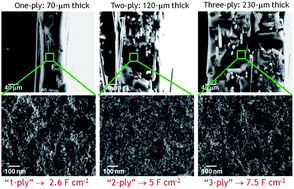The right kind of interior for multifunctional electrode architectures: carbon nanofoam papers with aperiodic submicrometre pore networks interconnected in 3D†
Abstract
Carbon nanoarchitectures are versatile platforms for advanced

* Corresponding authors
a
U.S. Naval Research Laboratory, Surface Chemistry Branch (Code 6170), 4555 Overlook Avenue SW, Washington, DC, USA
E-mail:
jeffrey.long@nrl.navy.mil, rolison@nrl.navy.mil
Fax: +1 202-767-3321
b Department of Chemistry, Pacific Lutheran University, Tacoma, WA, USA
Carbon nanoarchitectures are versatile platforms for advanced

 Please wait while we load your content...
Something went wrong. Try again?
Please wait while we load your content...
Something went wrong. Try again?
J. C. Lytle, J. M. Wallace, M. B. Sassin, A. J. Barrow, J. W. Long, J. L. Dysart, C. H. Renninger, M. P. Saunders, N. L. Brandell and D. R. Rolison, Energy Environ. Sci., 2011, 4, 1913 DOI: 10.1039/C0EE00351D
To request permission to reproduce material from this article, please go to the Copyright Clearance Center request page.
If you are an author contributing to an RSC publication, you do not need to request permission provided correct acknowledgement is given.
If you are the author of this article, you do not need to request permission to reproduce figures and diagrams provided correct acknowledgement is given. If you want to reproduce the whole article in a third-party publication (excluding your thesis/dissertation for which permission is not required) please go to the Copyright Clearance Center request page.
Read more about how to correctly acknowledge RSC content.
 Fetching data from CrossRef.
Fetching data from CrossRef.
This may take some time to load.
Loading related content
